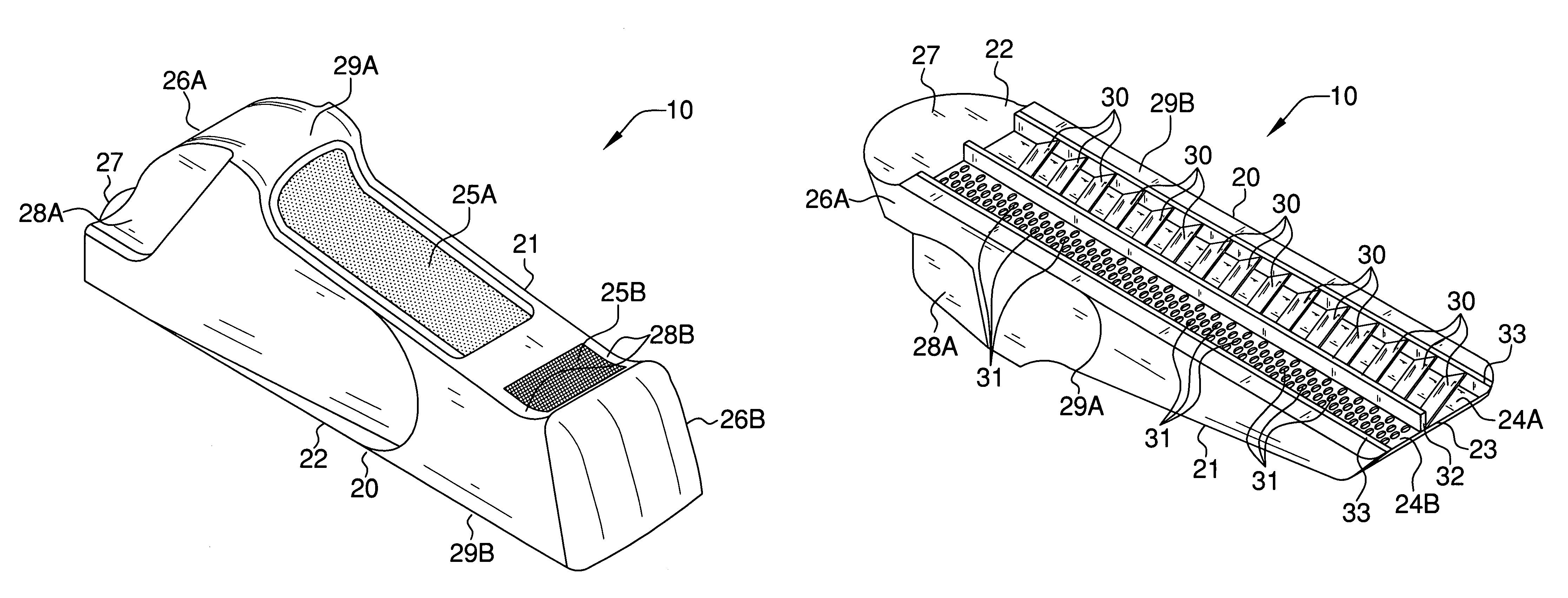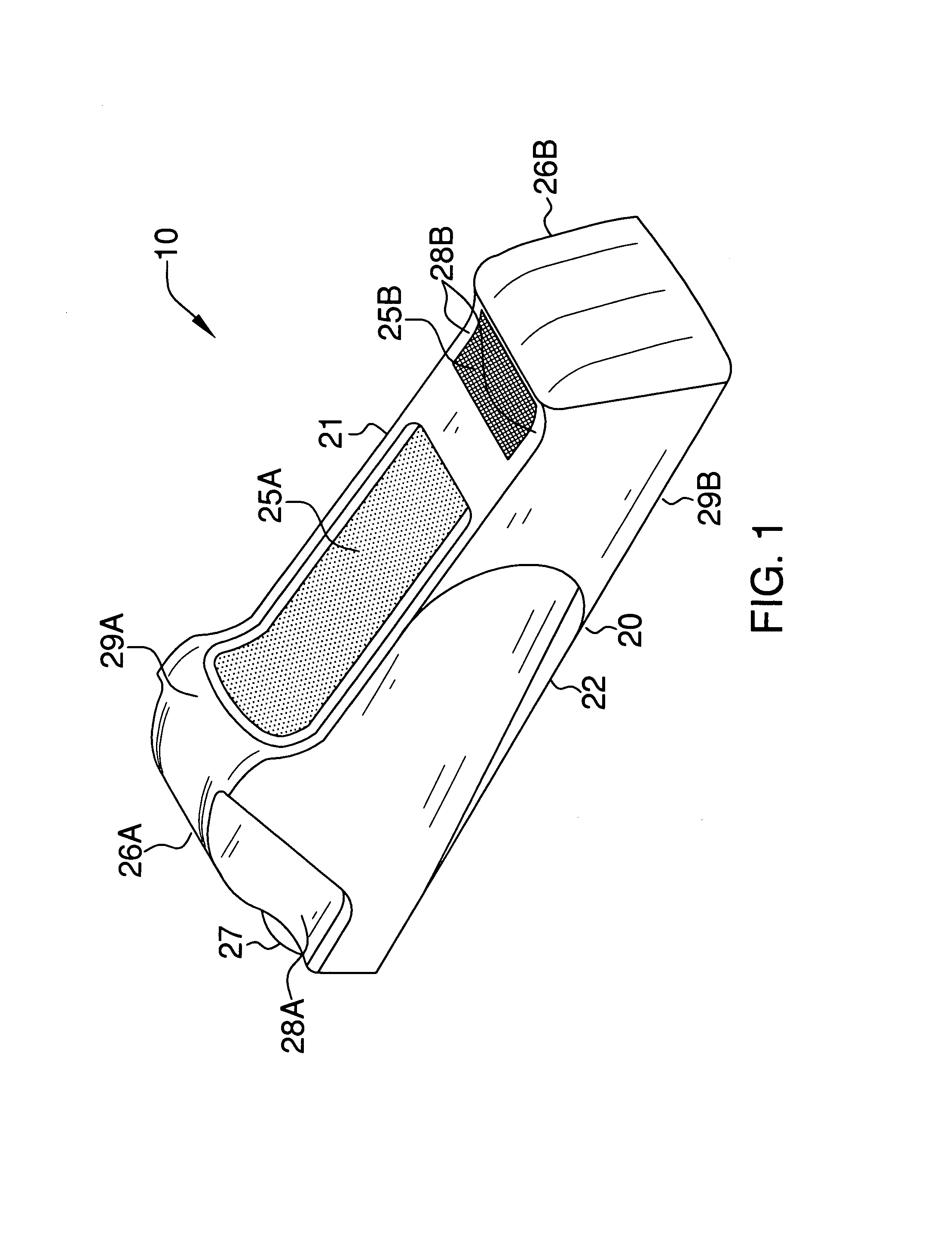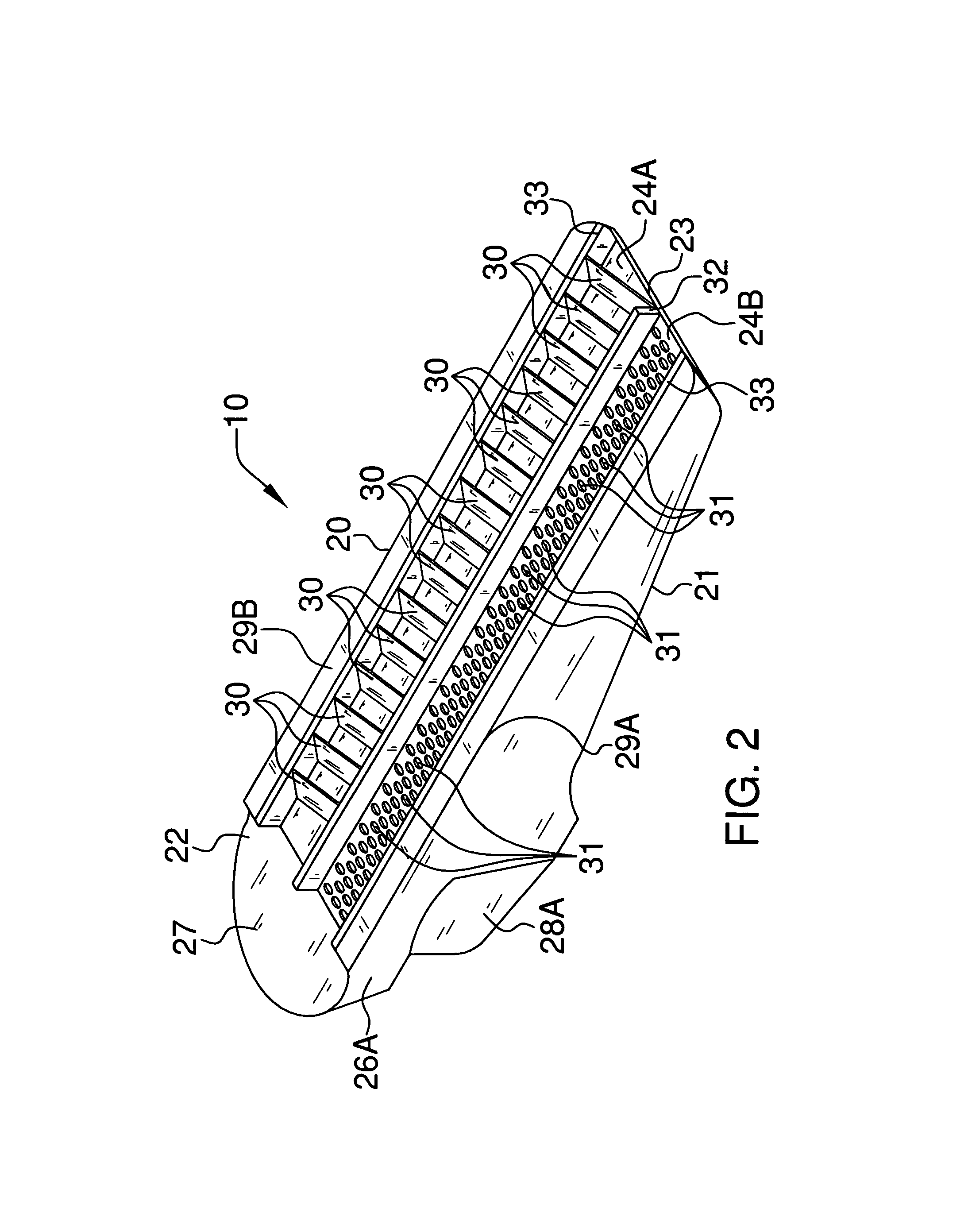Drywall rasp
a drywall and stanley® technology, applied in the field of stanley® rasps, can solve the problems of inability to cut these sheets to size, inability to smooth stanley® rasps, and inability to cut them to size,
- Summary
- Abstract
- Description
- Claims
- Application Information
AI Technical Summary
Benefits of technology
Problems solved by technology
Method used
Image
Examples
Embodiment Construction
[0029]The present invention will now be described more fully hereinafter with reference to the accompanying drawings, in which a preferred embodiment of the invention is shown. This invention may, however, be embodied in many different forms and should not be construed as limited to the embodiment set forth herein. Rather, this embodiment is provided so that this application will be thorough and complete, and will fully convey the true scope of the invention to those skilled in the art. Like numbers refer to like elements throughout the figures.
[0030]The apparatus of this invention is referred to generally in FIGS. 1–4 by the reference numeral 10 and is intended to provide a drywall rasp. It should be understood that the apparatus 10 may be used to smooth and angle many different types of sheeted material and should not be limited in use to only drywall.
[0031]Referring initially to FIGS. 1 and 2, the apparatus 10 includes a body 20 including upper 21 and lower 22 portions. Such a lo...
PUM
 Login to View More
Login to View More Abstract
Description
Claims
Application Information
 Login to View More
Login to View More - R&D
- Intellectual Property
- Life Sciences
- Materials
- Tech Scout
- Unparalleled Data Quality
- Higher Quality Content
- 60% Fewer Hallucinations
Browse by: Latest US Patents, China's latest patents, Technical Efficacy Thesaurus, Application Domain, Technology Topic, Popular Technical Reports.
© 2025 PatSnap. All rights reserved.Legal|Privacy policy|Modern Slavery Act Transparency Statement|Sitemap|About US| Contact US: help@patsnap.com



